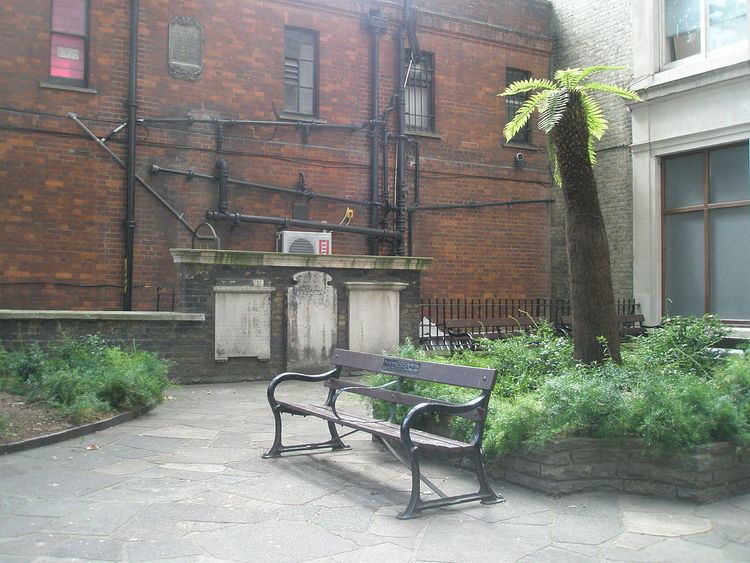Country United Kingdom | Denomination Anglican | |
 | ||
Address 126 Cheapside, London EC2V 6BT, UK Similar St Nicholas Olave, St Michael‑le‑Querne, St Faith under St Paul's, St Botolph Billingsgate, St Matthew Friday Street | ||
St Peter, Westcheap, sometimes known simply as “St Peter Cheap”, was a parish church in the City of London. It stood at the south west corner of Wood Street in the ward of Farringdon Within. Parts of the parish were also in Bread Street and Cripplegate Wards Of medieval origin, it was destroyed by the Great Fire of London in 1666 and not rebuilt.
Contents
History
St Peter Westcheap was originally built in the 12th century. In his will, dated 1361, Nicholas Faringdon, four times Lord Mayor of London, left money for the foundation of a perpetual chantry at the church. Both church and steeple were rebuilt with funds bequeathed by Sir John Shaw, who died in 1503; one of his stipulations was that the church should be reconstructed with a flat ceiling. The 16th-century church was an aisled building; Richard Newcourt noted that, notwithstanding Shaw's bequest, "Thomas Wood, Goldsmith was accounted a principal Benefactor, because the Roof of the middle Isle was supported by Images of Woodmen." Repairs were carried out in 1616-17, at a cost to the parishioners of £314.
The patronage of the church belonged to the Abbots of St Albans until the dissolution of the monasteries. Henry VIII then granted it to Lord Wriothesly, and it was inherited by his descendants the Earls of Southampton. The rector of the church from 1529 to 1534 was Thomas Goodrich, later Bishop of Ely and Lord Chancellor.
On 14 January 1559, during a royal progress through the City, Queen Elizabeth was presented with a Bible in English as she passed the church door.
Destruction
Along with the majority of the parish churches in the City, St Peter's was destroyed by the Great Fire in 1666. A Rebuilding Act was passed in 1670 and a committee set up under Sir Christopher Wren. It decided to rebuild 51 of the churches, but St Peter's was not among them. Instead the parish was united with that of St Matthew Friday Street. The site of the church was retained for use as a graveyard, and turned into a public garden in the 19th century. Three gravestones survive, as do the railings, which date from 1712.
